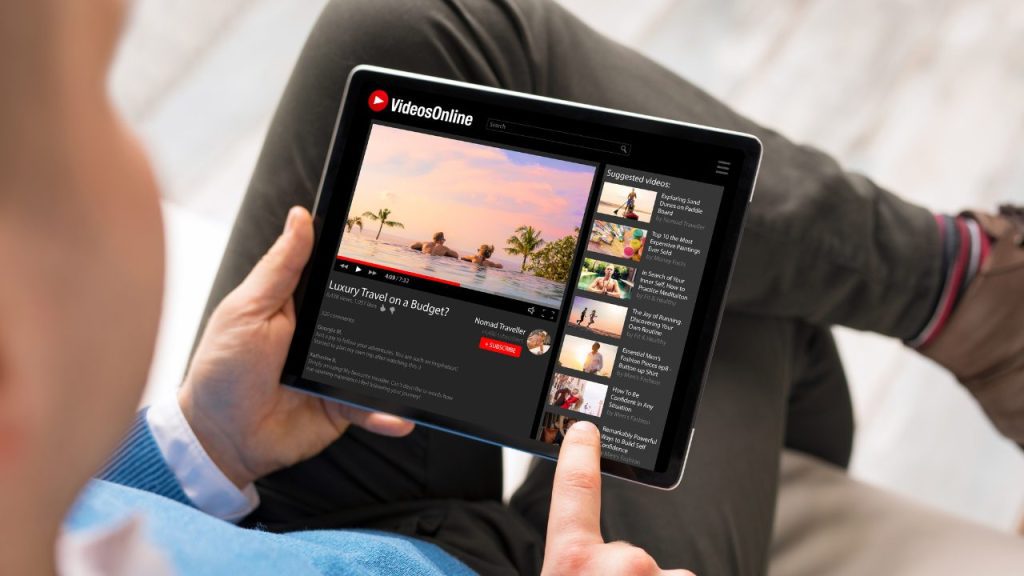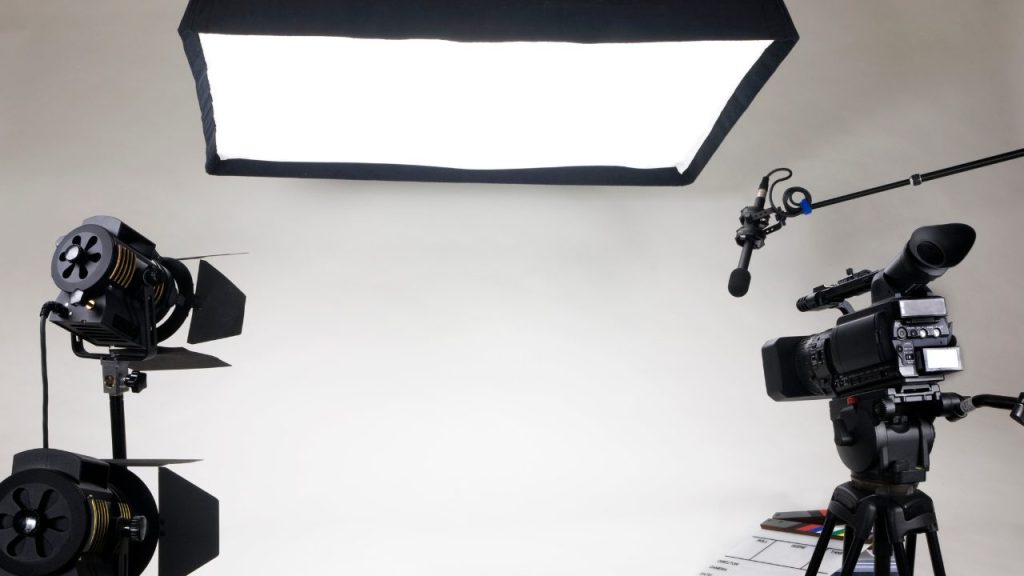Ah, the age-old battle of long-form versus short-form video. You, dear viewer, find yourself at the crossroads of content creation. Do you want your audience to binge-watch your videos until their eyes bleed? Or do you prefer the quick hit of bite-sized snippets?
It’s a choice between going deep or going wide. Either path has its merits, but like Goldilocks, you must find the length that’s just right. Too long, and you’ll lose them to the deadly combo of boredom and buffering. It’s too short, and you’ll leave them wanting more in the worst way.
The path you take depends on your goals. Do you want to educate or entertain? Convert or captivate? In the end, you must follow your gut. Take a risk and choose your own adventure – just maybe keep some antacids handy.
Short vs Long Form Video: An Overview

So you want to start making videos, huh? Before you dive in headfirst, you’ll need to determine whether you want to create short-form or long-form content. Short-form videos, under 2 minutes, are perfect for promoting quick engagement and sharing on social media.
They’re ideal if you have the attention span of a squirrel on espresso. The downside is you can’t cover topics in depth. Long-form videos, 10 minutes or more, allow you to discuss topics thoroughly and establish yourself as an expert. However, you run the risk of losing viewers with short attention spans.
What’s a busy entrepreneur to do? Why not do both? Mixing up your video length keeps things interesting for viewers and allows you to leverage the benefits of each format. For example, you can release a long video on “The 7 Steps to Closing a Sale” and follow up with short videos highlighting each step. Or do the opposite, releasing a series of short tips on social media and combining them into a more comprehensive long-form video.
The most important thing is to keep your content engaging. Whether short or long, be enthusiastic, share stories, use humor, and highlight the benefits to your audience. Keep videos under 20 minutes for the best results. If you start losing steam or run out of material, end the video – your audience will thank you.
While quality equipment and editing do help, the real key to great video is practice. The more videos you make, the more comfortable and engaging you’ll become on camera. Don’t worry about being perfect, just start creating. You can always improve your skills over time through online tutorials.
So grab your smartphone, pick a video length, and start sharing your expertise with the world. Your future customers are waiting! What are you waiting for? Lights, camera, action!
The Benefits of Long-Form Video Content

Long-form videos, typically 10 minutes or longer, allow you to go in-depth on a topic, educate your viewers, and build authority. If you’ve got expertise or an interesting story to share, long-form is the way to go. The longer runtime gives you a chance to connect with your audience and win their trust.
Deeper Insights
With more time, you can dive deeper into concepts, share examples, data, and case studies, address questions and concerns, and generally provide a lot more value and actionable takeaways for your viewers. Long-form also allows for a more comprehensive overview of complex topics.
Better for Search
Longer videos tend to rank higher in search results because search engines reward content that is more in-depth. Long-form videos are also more likely to be shared since they contain so much useful information. All this activity signals to Google that your content is high quality and authoritative.
Builds Trust and Credibility
Spending more time with your audience allows you to establish yourself as an expert in your field. Viewers have a chance to get familiar with you, understand your experience and qualifications, and determine if you’re someone they want to continue to learn from. Long-form content is essential for educating and nurturing your audience.
Ad Revenue
If you’re monetizing your videos, long-form can generate more ad revenue since you have more ad inventory from the increased length and watch time. Viewers are also more likely to sit through multiple ads in a longer video. Cha-ching!
While long-form video has some significant benefits, it really comes down to your goals and what will best serve your audience. Don’t be afraid to experiment with different lengths and formats. Your viewers will let you know what they prefer by how they engage with your content. Now get out there and start creating! The world awaits your next viral video.
When Short Form Video Works Best

The short-form video format, typically under 2 minutes in length, is ideal when you want to quickly grab your viewers’ attention and deliver a succinct message. If you’re looking to briefly introduce a topic, share a tip or update, or promote an event, short and sweet is the way to go.
Attention spans are short, so keep it brief
Let’s face it, viewers today have the attention span of a caffeinated squirrel. If you drone on for 10 minutes about the latest widget update, you’ll lose them after 30 seconds. A short video, on the other hand, is like a little shot of espresso for their brain. Give them the highlights in 60-90 seconds and they’ll stay engaged to the end, eager for more. Satisfy their craving in small doses.
Perfect for social media
Short videos are tailor-made for social platforms like Facebook, Instagram, and Twitter where people are scrolling fast and want content they can consume on the go. A 2-minute video is ideal. Any longer and you risk losing viewers as they continue scrolling down their feed. Keep your message tight and impactful.
Easy to produce
Creating a short video doesn’t require a huge time commitment or budget. You can outline, shoot, and edit a quality 60-90-second video in a few hours. Keep your set simple, and your message concise, and avoid time-consuming effects or graphics. The minimal effort will pay off with high engagement.
While short-form video works great in many situations, it may not suit all of your needs. If you have a complex topic or story to share or want to establish yourself as an authority, a longer video format is probably better.
The most important thing is providing value to your viewers in the way they prefer to receive it. Why not experiment with different lengths and see what resonates most with your audience? The data may surprise you!
Video Making Tips for Beginners: Essential Gear for Quality Home Videos

So you want to become the next YouTube sensation or just impress your friends with slick videos, eh? Not to burst your bubble, but unless you’ve got an endless budget for pro gear, you’ll have to work with what you’ve got. The good news is, with a bit of technique, you can create quality videos without dropping your life savings.
You already own everything you need.
That smartphone in your pocket? It can capture 4K video and has a decent mic. Your laptop or tablet? It has simple but capable video editing software. Unless you’re shooting an action epic, that’s really all you need. Keep it simple, silly!
Lighting is everything.
Forget high-tech equipment, proper lighting is the key to a pro look. Film by a window for natural light or grab some basic softbox lights. Avoid overhead lighting which creates unflattering shadows. Your footage will look 10x more polished with some simple three-point lighting.
Frame your subject.
Learn some basic composition and your videos will shine. The rule of thirds, headroom, and leading lines can make a huge impact. Keep the camera at eye level, hold it steady, and give your subject space in front of them to walk into. These little tricks make a big difference.
Edit like a pro.
You don’t need fancy software to edit like a pro. Your built-in editor or free tools have the basics: trim clips, add transitions, insert titles, apply color correction, and drop in a soundtrack. Keep edits tight, transitions minimal, and titles short. Mix in cutaways and b-roll for visual interest. With some practice, you’ll be editing like Spielberg (ok, maybe not quite!).
See? You have everything you need to make quality home videos. Forget dropping dough on expensive gear and focus on developing technique. With practice, you’ll be creating polished, professional-looking videos in no time and building your future YouTube empire, one video at a time.
Lighting Techniques for Professional-Looking Videos

So you want to make videos that don’t look like they were filmed in your mom’s basement? The key is lighting, my friend. Proper lighting can transform your homemade videos from cringe to credibly professional.
Use Natural Light
If you’ve got windows, use them! Natural light is the most flattering for videos. Film during the day when light is streaming in. Just be sure to place your subject broadside to the window, not with the light behind them. We want to see that gorgeous face of yours, not a silhouette! Open those blinds and get filming.
Invest in Some Basic Gear
Alright, we can’t always rely on Mother Nature. For a few bucks, you can pick up some basic lighting gear to help you out. Grab a couple of softbox lights or a basic three-point lighting kit. Make sure you get lights with adjustable brightness so you can get the level just right. Place one light on either side of your camera at a 45-degree angle, and you’ve got professional-quality lighting.
Consider Your Background
A well-lit subject against a dark, cluttered background still won’t look professional. Pay attention to what’s behind your subject. A plain wall is always a good, simple option. If you want something more interesting, consider a bookcase, brick wall, or textured backdrop. Just make sure there’s good contrast between your subject and the background, and that any details in the background are minimal and tidy.
Practice Makes Perfect
Like any technique, lighting takes practice. Play around with different types of lights in different positions and intensities. Watch how the light falls on your subject and look for any harsh shadows or uneven areas. Make adjustments and film some test footage to review. With regular practice, you’ll be wielding light like a pro in no time and producing videos that look like a million bucks.
How to Make Best Quality Video for YouTube: Camera Settings and Composition Tips

So you’ve decided to grace the world with your dulcet tones and stunning visage via the YouTube machine. Fabulous choice, my friend. Now comes the tricky bit—figuring out how to make a video that doesn’t look like a potato filmed it.
Focus, people.
The most important thing is making sure your audience can actually see what’s going on. Take a few seconds to check that your focus, exposure, and white balance are solid before launching into your soliloquy. Unless fuzzy and underexposed is the look you’re going for, in which case, you do you.
Frame the scene.
Pay attention to what’s in the frame around you. Make sure there’s nothing weird or distracting going on in the background. And for the love of all that is holy, avoid filming in front of bare, white walls—that’s a one-way ticket to boredomville. Add some interest with art, bookshelves, plants, or whatever fits your personal style. But go easy on the clutter, you’re not filming an episode of Hoarders.
Hold still.
There’s nothing more dizzying and distracting than a video where the camera won’t stop moving. Place your camera on a tripod or steady surface and leave it there while filming. If handholding, keep those hands as still as a statue. Any movement should come from you, not the camera.
Headroom and framing.
Don’t cut your head in half or leave too much space above it. Follow the rule of thirds for the most balanced, pleasing composition. Position yourself slightly off-center and leave equal space on either side of you. Don’t be afraid to get in close—a tight shot where we can see your facial expressions helps to engage your viewers.
Lighting.
Good lighting can make or break a video. Place your key light, like a ring light or softbox, in front of you at a 45-degree angle. Use fill lights on either side to softly illuminate the rest of the scene. Avoid having a bright window or harsh overhead light directly behind you. Three-point lighting for the win!
With some practice and patience, you’ll be creating professional-looking videos in no time. But don’t forget—your audience will appreciate your authentic self far more than a flawless production. So relax, have fun, and let your personality shine through! The rest will fall into place.
Editing Your Footage Like a Pro

So you’ve shot your video footage and now it’s time for the fun part – editing! If the thought of editing a video seems about as fun as getting a root canal, don’t worry. With a few simple tricks, you’ll be cutting and splicing like a pro in no time.
Find Your Flow
Raw footage is like clay – shapeless and messy. Your first job is to review all your clips and organize them into a logical sequence. What story do you want to tell? How can you arrange the footage to keep your viewers engaged? Don’t be afraid to cut clips that don’t fit or move sections around. Editing is an iterative process, so you may go through multiple rounds of rearranging before you find the right flow.
Slice and Dice
Now it’s time to trim the fat. Look for any dead space before or after your clips and cut it out. Review each clip and cut out any boring, repetitive, or unnecessary sections. Keep things tight and concise. Your goal is to eliminate anything that doesn’t add value for your viewers. Be ruthless – you can always save the extra footage in case you change your mind later.
Transitions and Effects
Transitions are the bridges between your clips. Choose transitions that match the tone and style of your video. Subtle fades or simple cuts usually work best for a professional look. Only use flashy transitions sparingly, if at all.
Effects can also help polish the look of your video but use them judiciously. A little slow motion, color correction, or title overlay goes a long way. Too many effects just look tacky and distract from your content.
Music and Audio
Nothing transforms the feel of a video like the right soundtrack. Choose instrumental music that matches the energy and mood of your content. Make sure the volume is balanced so it’s audible but not overpowering. You may also want to record a voiceover to provide context or transition between sections.
Listen to the overall audio levels and make sure any voiceovers are clear and consistent. With some time and patience, these techniques will have you producing sleek, professional videos in no time. Your viewers will be so immersed in your content they’ll never guess you’re not a pro! Now get editing – your audience is waiting!
Optimizing Your Video for Maximum Engagement
So you’ve got your video equipment all set up and you’re ready to create content, but now comes the real challenge: how long should you make your videos to keep people watching? When it comes to video length, you’ve got two options: long form or short form.
Long-form videos, clocking in around 10 to 30 minutes, are great if you’ve got a complex topic to cover or want to establish yourself as an authority. Sure, longer videos may seem daunting to create, but think of all the juicy details you can pack in!
Your viewers will appreciate how in-depth and well-researched your content is. However, long-form also means more opportunities for people to get bored and click away, so make sure you’ve got enough interesting info and charisma to keep ‘em hooked!
On the other hand, short-form videos of 1 to 3 minutes are perfect if you’re going for quick engagement and shares. Short and sweet is the name of the game here. You’ve only got a minute or two to make an impact, so cut straight to the most interesting or entertaining parts and keep things fast-paced.
Viewers with short attention spans will love how quickly you get to the point. The downside is less time to establish your expertise or cover topics in depth. You’ll need to be extremely concise while still coming across as knowledgeable.
At the end of the day, you need to go with what suits your content and audience best. If you’re trying to educate people on a complex subject, long-form is probably your friend. If you just want to give a quick tip or share something amusing, short form is the way to go.
You can also mix and match – use longer videos to go in-depth on certain topics and shorter ones to briefly highlight other points or share updates. The options are endless! With the right strategy, you’ll be optimizing your video length for maximum engagement in no time.
Conclusion
So ask yourself: are you going for the deep-dive experience or short-form snacking? Could your message use both? The beauty is you don’t have to choose just one. Mix it up and give your audience options. After all, you’re not producing content for yourself but for the people who want to watch.
And if we’ve learned anything here today, it’s to keep their needs front and center. Unless you want them to click away faster than you can say “Please like and subscribe!”
Read More : How I Learned Spanish in 30 Days Using This Easy Trick
 Oko Dot All In One Technology Solutions By Likhon Hussain
Oko Dot All In One Technology Solutions By Likhon Hussain
